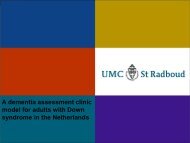here - SBS Documents
here - SBS Documents
here - SBS Documents
You also want an ePaper? Increase the reach of your titles
YUMPU automatically turns print PDFs into web optimized ePapers that Google loves.
John Anthony Milliss delivered by<br />
Penny Robertson<br />
student’s strengths, interests and needs. This information needs to be accessed so<br />
strategies and goals that are strength based are developed.<br />
Not all parents have positive attitudes towards IEP meetings. When meetings are<br />
based on strengths, parents are more positive about their involvement and will attend<br />
meetings regularly (Weisshar, 2010, p.210). Parents need to feel supported and feel<br />
that what they have to say is valued by the team. The Shaddock Report (2007, p.3)<br />
discusses the importance of collaborating ‘ with colleagues, parents and other students<br />
in assisting them to deliver a differentiated curriculum’. The process can become<br />
empowering for parents when they see the school working with them along with other<br />
professionals offering special services.<br />
Collaboration between mainstream and specialist support teachers is also an important<br />
part of creating an inclusive school community (Caterson, 2010, p.4). Members of the<br />
school community must effectively share information about individual students and<br />
value the importance of open communication in order to give ongoing support to<br />
students.<br />
Characteristics of a differentiated classroom<br />
Individualised Program Planning based on student strengths can enhance learning<br />
opportunities for all students. In today’s classroom, the role of the teacher is forever<br />
changing. The challenge for teachers is their ability to ‘differentiate instruction in<br />
response to the diversity of their student's, (Tomlinson, 1996, p.1).<br />
T<strong>here</strong> are numerous characteristics that would enhance learning in a differentiated<br />
classroom. The first is that a positive school environment needs to be established<br />
w<strong>here</strong> all members of the community feel supported by each other, accepted for their<br />
differences and valued on their strengths and contributions to the school community<br />
(Caterson, 2010, p.2). Once this environment is formed teachers will feel supported<br />
and will be able to remove ‘barriers to learning and participation in all aspects of<br />
school life’ for their student’s (Caterson, 2010, p.1).












